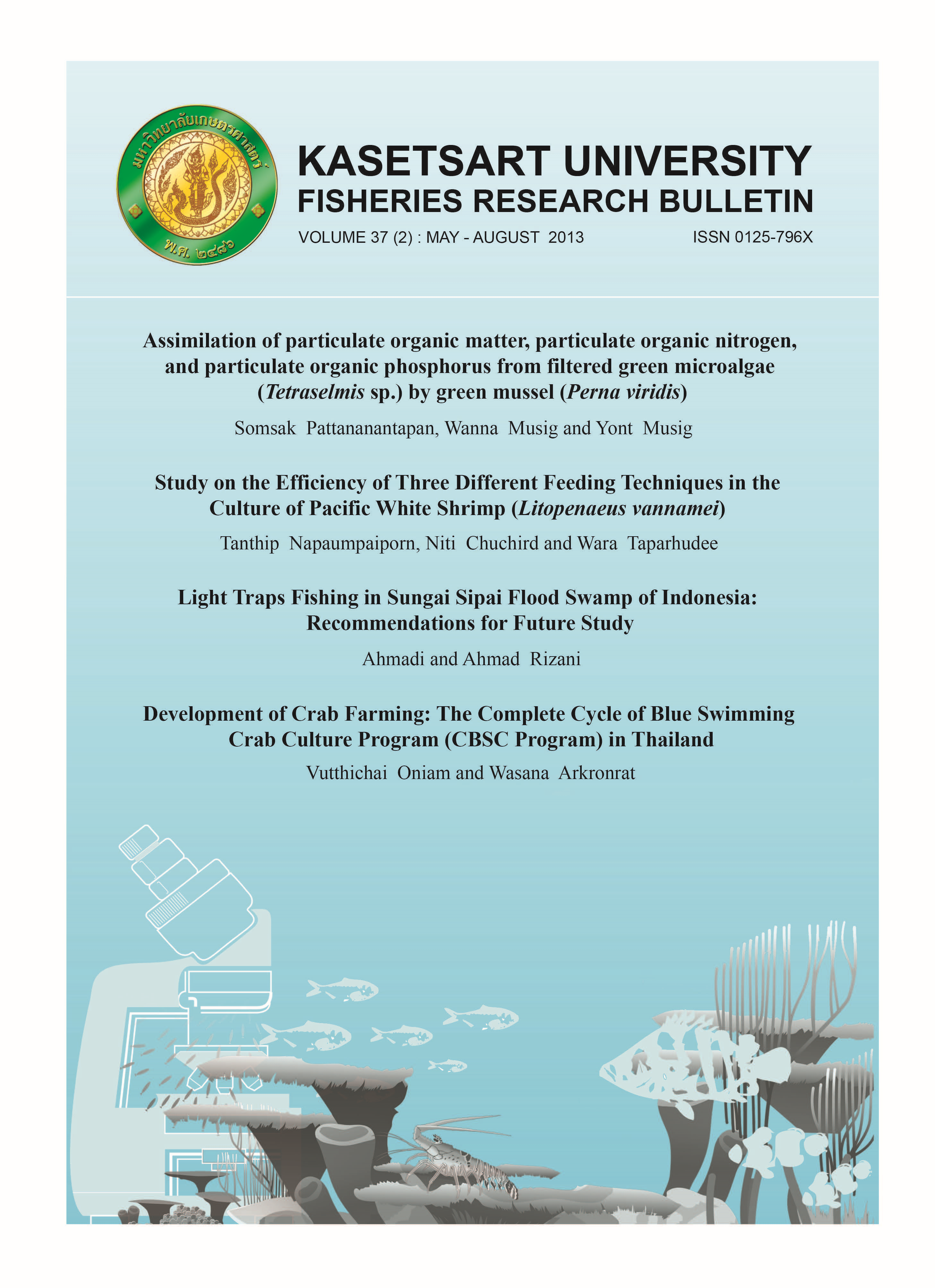Study on the Efficiency of Three Different Feeding Techniques in the Culture of Pacific White Shrimp (Litopenaeus vannamet)
Main Article Content
Abstract
The efficiency of three different shrimp feeding techniques used in intensive culture of white shrimp (Litopenaeus vannamei) was compared, with feeding trials conducted in Tha Chang district, Surat Thani province. The experiment had 3 treatments employing the 3 feeding techniques, namely, manual feeding (technique 1), automatic feeding with time setting (technique 2), and automatic feeding with sound detection (technique 3). Each treatment utilized 3 1-ha ponds with polyethelene sheet lining (PE). Stocking density was 75 post-larvae (PL)/m2 and culture period was 120 days. Results showed that the average daily growth (ADG) from techniques 2 and 3 were 0.21 and 0.24 g/day, respectively, which were higher than that obtained from technique 1 (0.18 g/day). The feed conversion ratio (FCR) from techniques 1 to 3 were 1.5, 1.4 and 1.3, respectively. The best mean body weight was found in shrimp fed by technique 3 at 24.52g while the poorest weight was 15.92g found in shrimp fed by technique 1. No significant differences in survival rates were found in all treatments. The yield from techniques 1 to 3 were 1,672, 1,739.3 and 1,848.3 kg/rai, respectively. Water quality parameters in the experimental ponds were within the suitable ranges for shrimp culture.


